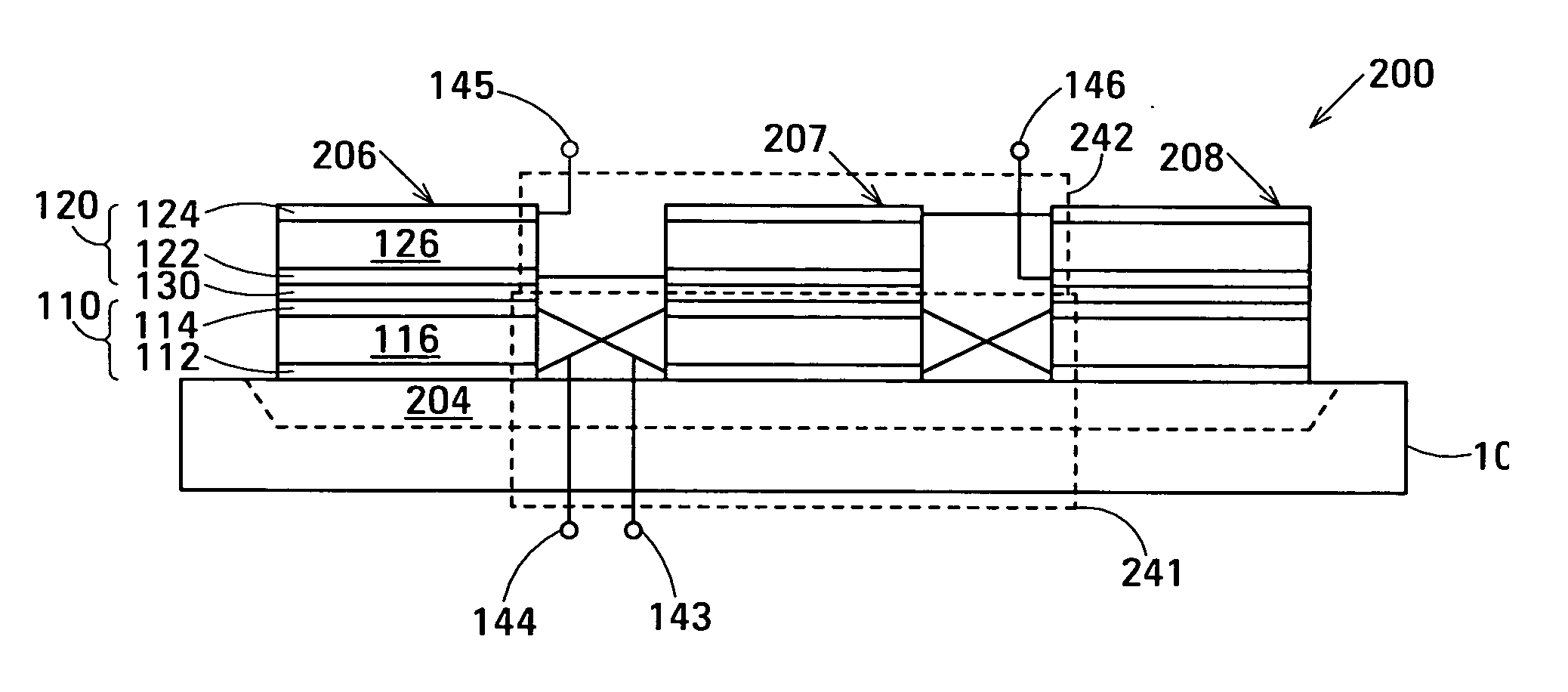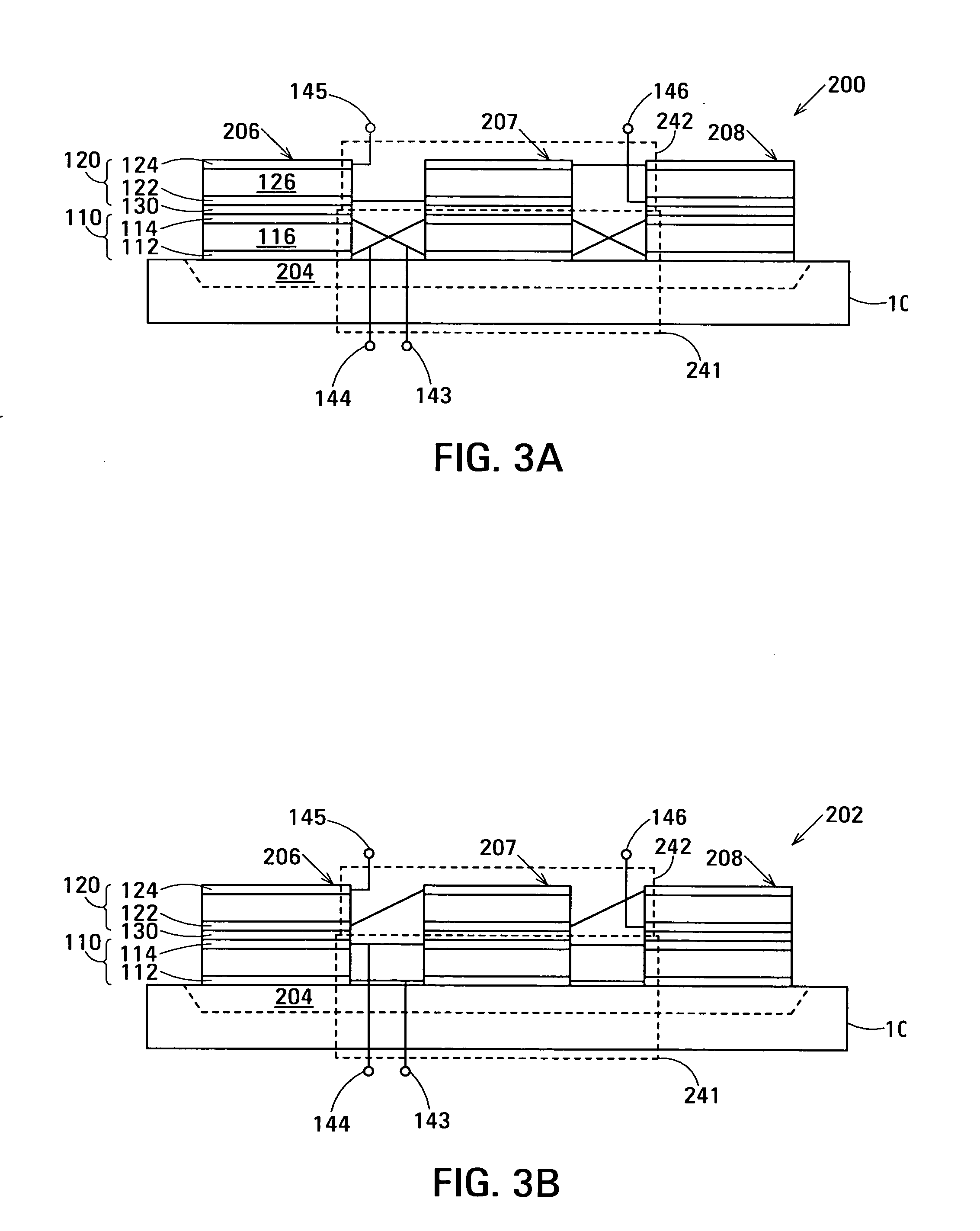Impedance transformation ratio control in film acoustically-coupled transformers
a technology of acoustically coupled transformers and transformers, which is applied in the direction of impedence networks, electrical apparatus, solid-state devices, etc., can solve the problems of coil-based transformers becoming impractical, not all transformers have all of these properties, and the autotransformer not providing electrical isolation
- Summary
- Abstract
- Description
- Claims
- Application Information
AI Technical Summary
Benefits of technology
Problems solved by technology
Method used
Image
Examples
embodiment 202
[0062]FIG. 3B shows an alternative embodiment 202 of a three-DSBAR film acoustically-coupled transformer (FACT) in accordance with the invention also having an impedance transformation ration of 1:9. In this embodiment, electrical circuit 241 connects the lower FBARs 110 of DSBARs 206, 207 and 208 in parallel and to terminals 143 and 144. Additionally, electrical circuit 242 connects the upper FBARs 120 of DSBARs 206, 207 and 208 in anti-series between terminals 145 and 146.
[0063] Embodiments of electrical circuit 241 may interconnect the lower FBARs 110 of DSBARs 206, 207 and 208 in circuit arrangements different from those shown in FIGS. 3A and 3B to provide different impedances between terminals 143 and 144. Additionally, embodiments of electrical circuit 242 may interconnect the upper FBARs 120 of DSBARs 206, 207 and 208 in circuit arrangements different from those shown in FIGS. 3A and 3B to provide different impedances between terminals 145 and 146. The different impedances ca...
first embodiment
[0065]FIG. 3C shows electrical circuit 241 or electrical circuit 242 that connects FBARs 311, 313 and 315 in parallel between terminals T1 and T2. In this embodiment, the impedance between terminals T1 and T2 is Z / 3, where Z is the impedance of each of the FBARs 311, 313 and 315. FBARs 311, 313 and 315 are assumed to be equal in impedance. FIG. 3C illustrates the circuit arrangement in which electrical circuit 241 interconnects the lower FBARs 110 of DSBARs 206-208 in FIG. 3B.
second embodiment
[0066]FIG. 3D shows electrical circuit 241 or electrical circuit 242 that connects FBARs 311 and 313 in series and additionally connects FBAR 315 in parallel with the series combination of FBARs 311 and 313 between terminals T1 and T2. In this embodiment, the impedance between terminals T1 and T2 is (2Z2 / 3Z)=2Z / 3.
PUM
| Property | Measurement | Unit |
|---|---|---|
| insertion loss | aaaaa | aaaaa |
| thick | aaaaa | aaaaa |
| thickness | aaaaa | aaaaa |
Abstract
Description
Claims
Application Information
 Login to View More
Login to View More - R&D
- Intellectual Property
- Life Sciences
- Materials
- Tech Scout
- Unparalleled Data Quality
- Higher Quality Content
- 60% Fewer Hallucinations
Browse by: Latest US Patents, China's latest patents, Technical Efficacy Thesaurus, Application Domain, Technology Topic, Popular Technical Reports.
© 2025 PatSnap. All rights reserved.Legal|Privacy policy|Modern Slavery Act Transparency Statement|Sitemap|About US| Contact US: help@patsnap.com



